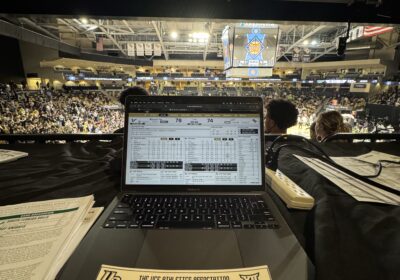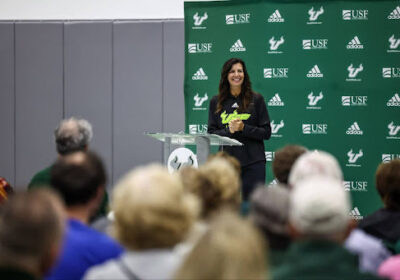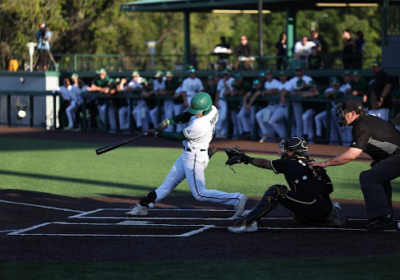Passing game struggles through 0-4 start
Four games are in the books for USF football this season and a continuous theme of the Bulls’ 0-4 start is the drastic difference on the offensive side of the ball between a productive rushing attack and the lack of a remotely threatening passing game.
Senior running back Marcus Shaw had his third 100-plus yard rushing game of the season against No. 14 Miami, and is averaging 131.2 rushing yards per game and 6.8 per carry. As a team, though USF is 99th in the country in rushing yards.
It’s safe to say Shaw is the USF offense.
The Bulls’ three quarte backs have barely surpassed Shaw’s totals through the air, at 148.5 passing yards per game — 114th in the nation out of 123 teams.
To make matters worse for USF, sophomore quarterback Steven Bench seemed to meet a new Hurricane jersey on every pass play in his first
collegiate start Saturday afternoon. Almost every run fake to Shaw never had the time to develop. Before Bench could pull the ball back and get ready to pass, he was swarmed by Hurricanes with the type of athleticism USF hasn’t seen this season.
On one play, Bench was swept off his feet and driven to the ground so hard he wobbled side-to-side, trying to make it to the sideline.
That’s not even counting the official sack total of Saturday’s game.
Bench was sacked five times and forced to scramble with a glimmer of hope on several other occasions.
Redshirt junior center Austin Reiter said the team’s run blocking for Shaw is clearly better than the pass
blocking at this point, but said he believed pass blocking has improved.
Maybe the offensive line has improved, but there seemed to be a differing of opinion as to why Bench was under constant duress.
While Reiter said the importance of protecting the quarterback going forward is “everything,” he didn’t say the offensive line protected
poorly, which coach Willie Taggart also didn’t explicitly mention.
“Some of it is missed assignments and some of it was Bench holding the ball too long,” Taggart said. “That’s part of Bench gaining confidence and
knowing exactly where he’s going to go with the ball. He has a tendency to hold the ball and we have to coach him out of that and it’ll come with time.”
Taggart said running backs have missed
blocking assignments as well, which can explain
Miami blitzers chasing down Bench without being touched by one green jersey.
“I know as a quarterback when you get hit a couple times you start to release the ball sooner,” Taggart said. “I’m sure he will get better at that, but it was a cumulative effect of missed assignments and Bench holding the ball too long. Not just the offensive line — they will get blamed a lot — but running backs are part of protection too.”
There had to be confusion throughout the offense. Against a team with the sheer talent of Miami, it can be expected that players will get beaten in one-on-one
matchups.
But to allow the Hurricanes to chase down Bench like a savage cheetah in the Sahara Desert is another thing.
USF needs to figure out who is blocking before Cincinnati next Saturday, and especially before No. 7 Louisville in four weeks.
USF had two weeks to
prepare for Miami and they’ll have two weeks to prepare for Louisville, between Oct. 12 and a game day of Oct 26.
But problems weren’t limited to the offense Saturday.
For the first time since the season opener, the USF defense was exposed and it wasn’t for a lack of effort, Taggart said.
During the first half, the USF defense failed to stop the Miami offense on third down five consecutive times. The first few occasions resulted in touchdowns.
The Bulls’ foundation through three games took a shattering blow Saturday, allowing six touchdowns – three through the air and three on the ground. A USF defense that allowed under 275 yards in each of the last two games was exploited by Miami to the tune of 540 yards, 251 of which in the first quarter, in addition to the 42 points.
And it could’ve been worse.
Miami sophomore running back Duke Johnson fumbled twice near the USF end zone, killing two more Miami drives that moved down the field with surgical precision.
When Miami scored in under three minutes to start the game, USF answered with an equally impressive drive. But Miami made defensive adjustments while USF didn’t. It was 35-7 at halftime.
Taggart said everyone knew Miami would fake a run and go deep time after time, and time after time, Miami connected on deep passes.12






